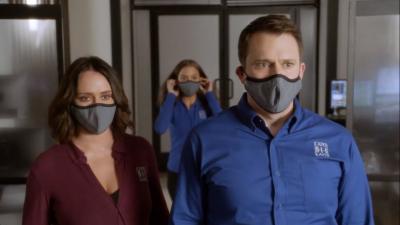Lights, camera…COVID?
Is injecting the virus into entertainment too much?
As we fall into new seasons of our favorite tv shows, we're seeing actors and the studios they work in adapt to follow COVID-19 mitigation regulations.
This includes, of course, wearing masks.
For some, now a year into this pandemic, it may not cause a second look. For others, it begs the question: where did my break from reality go?
Take into consideration Fox's series 9-1-1 and its sister 9-1-1: Lonestar. The fictional dramas detail first responders and the situations they handle, from smaller, isolated incidents to natural disasters.
As season four of 9-1-1 premiered, it was a full eight seconds before its audience realized the show decided to utilize the pandemic plotline when it mentioned the Centers for Disease Control (CDC) and infection rates. From there we saw the first episode detail the past few months for a woman who lost her husband to the virus.
There's also the issue that we're now more than aware of the basic COVID-19 safety precautions -- hand washing, hand sanitizing, mask wearing -- and while the writers have implemented it into the show, it's pretty half-assed. You don't see any of the hand washing or sanitizing, the six feet apart and sometimes you don't see masks when they should be worn.
Do we give Hollywood a break for trying? Or should they be held to follow the guidelines within the series themselves if they're going to write the pandemic into the script?
While understanding why it may be necessary to plug COVID-19 into entertainment for the sake of filming (Songbird, Locked Down, etc.), it's hard to want to watch television and movies that hold daily reminders that yes, we are living a real-life Groundhog Day. Family and friends of the nearly 450,000 lost to the pandemic now face forced reminders of that when all they want is to settle down with a bowl of popcorn and their favorite series. That being said, if they're attempting to show how much first responders are going through right now, here's hoping they do more to not undermine the hazardous, exhausting environment that real-life healthcare workers and first responders are in right now.




